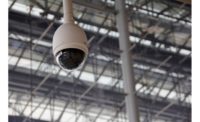Every professional video installation has hidden costs. Whether it’s a new system or system upgrade, the estimated cost of equipment and installation never really represents the true bottom line. Hence, it’s critical to recognize that the true cost of a video security system extends far beyond the cost of goods and labor. To help ensure a more accurate estimate of long-term ownership, there are a few considerations to keep top of mind.
It’s a common practice to source various system components from different providers based on their unique capabilities, as well as your system integrator’s preferred product lines. The diversity of suppliers often allows some corners to be cut, providing what may turn out to be artificial reductions in long-term costs. However, sourcing a complete end-to-end solution from a single supplier — from cameras and recorders with their native accessories to management software — can actually help to eliminate many of the headaches and added expenses that come with integrating individual products from different suppliers. A full end-to-end solution offers plug-and-play functionality and streamlines installation, implementation and maintenance expenses for enhanced cost savings over time.
One way to ensure that you benefit from a single-sourced system solution is to take advantage of direct IP infrastructure. This effectively ensures secure and efficient communication between cameras and recorders, significantly reducing the time and complexity associated with device installation. By automating the configuration process, direct IP eliminates the need for manual input of IP addresses, usernames, and passwords. This level of plug-and-play functionality allows installers to connect and program devices seamlessly, saving substantial time and costs in large-scale deployments.
There are also many potential hidden fees and costs associated with video management software (VMS). This includes the initial cost of the software, licensing fees, and costs to upgrade. You should be aware of all applicable costs before committing to a VMS provider, and know that there are many providers who do not charge for their software or licensing. This is critical when it comes to system scalability and estimating long-term costs that may not be realized until well into the future.
One often overlooked factor relates to the consistency of interface across a manufacturers’ entire product portfolio, regardless of a product’s cost, age, or technology. Systems with a consistent interface enable you to change and update your system, and still interact with the same interface that you were using 20-plus years ago — even if you’re upgrading from analog to IP. With a consistent interface, there is no cost to upgrade, no “deluxe” versions required to utilize all available tools, and no various product families to navigate. The enduring nature of the consistent interface contributes to the system's adaptability, empowering you to expand the system horizontally without impacting the user experience or requiring costly retraining.
Also, consider the ease of use for of the VMS solutions being evaluated. Some of the most expensive VMS solutions available today justify their cost by providing a plethora of tools. However, if those tools are not easy to use, let alone find, are you really utilizing the full value of that solution? Likely not. A system’s ease of use also impacts labor costs by extending training times and initiating turnover. The best way to determine a VMS’ ease of use if to get a live demo so you can see how the interface works based on your specific application and needs.
You will likely encounter recurring fees and maintenance costs relative to the storage requirements for your new video security system. Take for example the use of cloud-based storage, which typically includes fees to register, store, or even retrieve your video. These variable costs can add up fast when you begin using your new system. The cost of storage also relates to the size and amount of files being stored, which are critical considerations for industries like gaming and cannabis where the storage of video data is mandated by law. Consider this when deciding to purchase cloud vs. on-premises storage solutions.
Also consider your need to retrieve video data as it relates to investigative and litigation purposes. The ease to recall video, and prove its authenticity, can have a big impact on an organization’s legal procedures. The lack thereof could have costly consequences including noncompliance penalties, loss of evidence, failure to prosecute, and more.
Video analytics is the new rave providing numerous new benefits to security operations and for business intelligence applications across the enterprise. However, many video analytics are available to users only through a recurring fee or on a per-camera licensing fee. It could also be the case of camera-based analytics or analytics applied at the system’s headend. In either case, be sure these costs are well understood and calculated over the estimated lifespan of the system.
Aside from specific feature sets and overall performance specifications for each component in your upgraded or new video surveillance system, these are often obscured considerations to keep in mind when evaluating a system proposal. Discussing these considerations with your systems integration partner can help reduce the TCO of your system over the long run.




